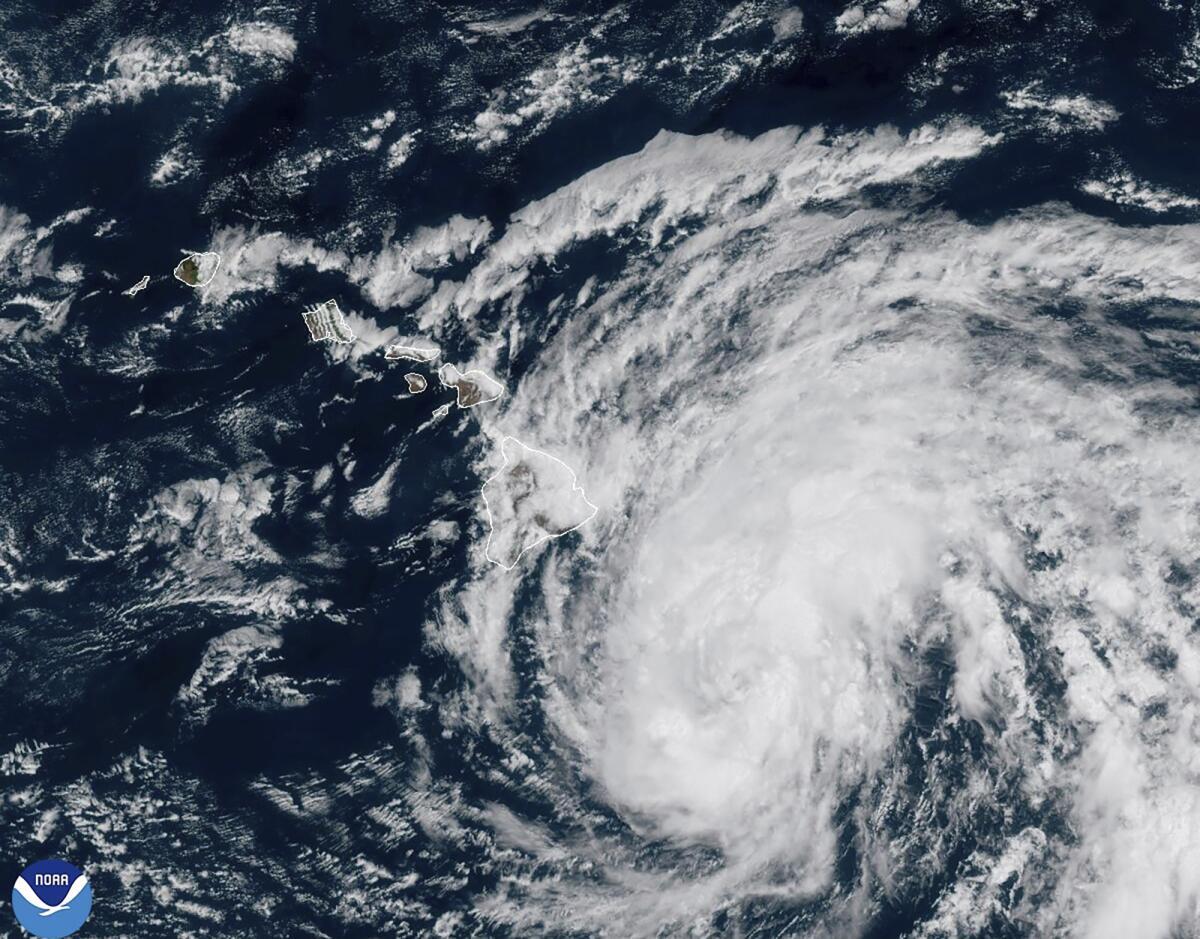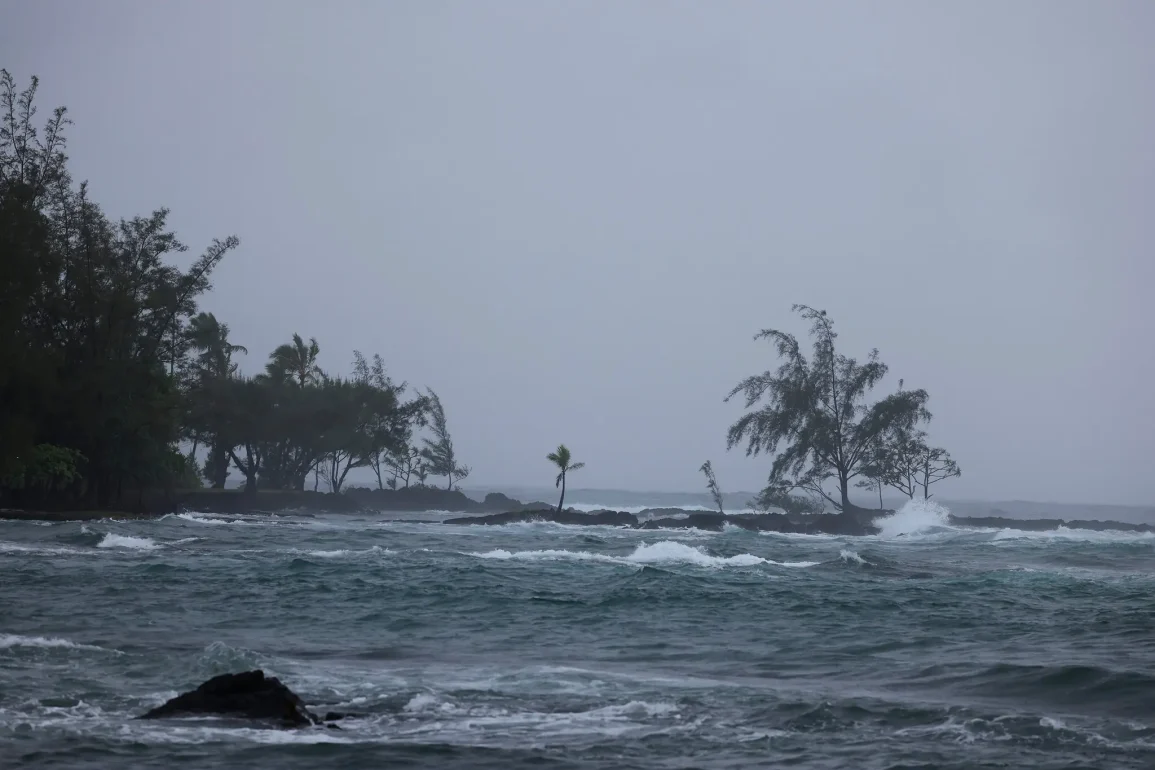Tropical Storm Hone, which was initially a Category 1 hurricane, has significantly weakened after impacting Hawaii’s Big Island over the weekend. The storm brought intense rainfall, strong winds, and hazardous waves, leading to widespread flooding and coastal damage.
As Hone approached the islands on Sunday morning, it passed approximately 45 miles south-southwest of South Point, with peak winds recorded at around 85 mph.
Although Hone has weakened and the Tropical Storm Warning for the Big Island has been lifted, the aftermath of the storm continues to affect the region. Flood Watches and High Surf Advisories remain in effect as the storm moves away from the islands.
The heavy rainfall caused significant flooding, particularly on the Big Island, where over a foot of rain fell in many areas, raising concerns about mudslides and landslides due to the saturated ground.

Specific areas like Hakalau and Saddle Quarry experienced extreme rainfall, with over 20 inches recorded in some locations. Flash Flood Warnings were issued throughout the day on Sunday as rain rates reached 2 inches per hour, resulting in rivers and streams overflowing and causing severe flooding in streets and neighborhoods. Videos from Pahala showed water rushing over roads, and multiple sections of Hawaii Belt Road were overtopped by floodwaters.
The storm also brought down trees and caused widespread power outages, with more than 16,500 customers on the Big Island without electricity as of early Monday morning. In response to the severe weather, shelters were opened across the island, and both the Hawaii County Mayor and the Governor declared states of emergency to ensure residents’ safety. Travel was heavily disrupted due to road closures and flight cancellations at airports like Hilo International.
As of the latest updates, Hone was located about 180 miles southwest of Honolulu and continued to move westward at 14 mph. With current wind speeds of 70 mph, the storm is expected to continue weakening in the coming days, bringing some relief to the region after its destructive impact.

